Last Reviewed and Updated on July 15, 2022
Impress your friends with some of the weirdest facts about animals ever. This list will have your jaw drop multiple times as some of these facts feel almost otherworldly. From animal species that are exclusively female, through immortal animals to some rather questionable behaviors of some animals… Truly the most bizarre and weirdest of them all.
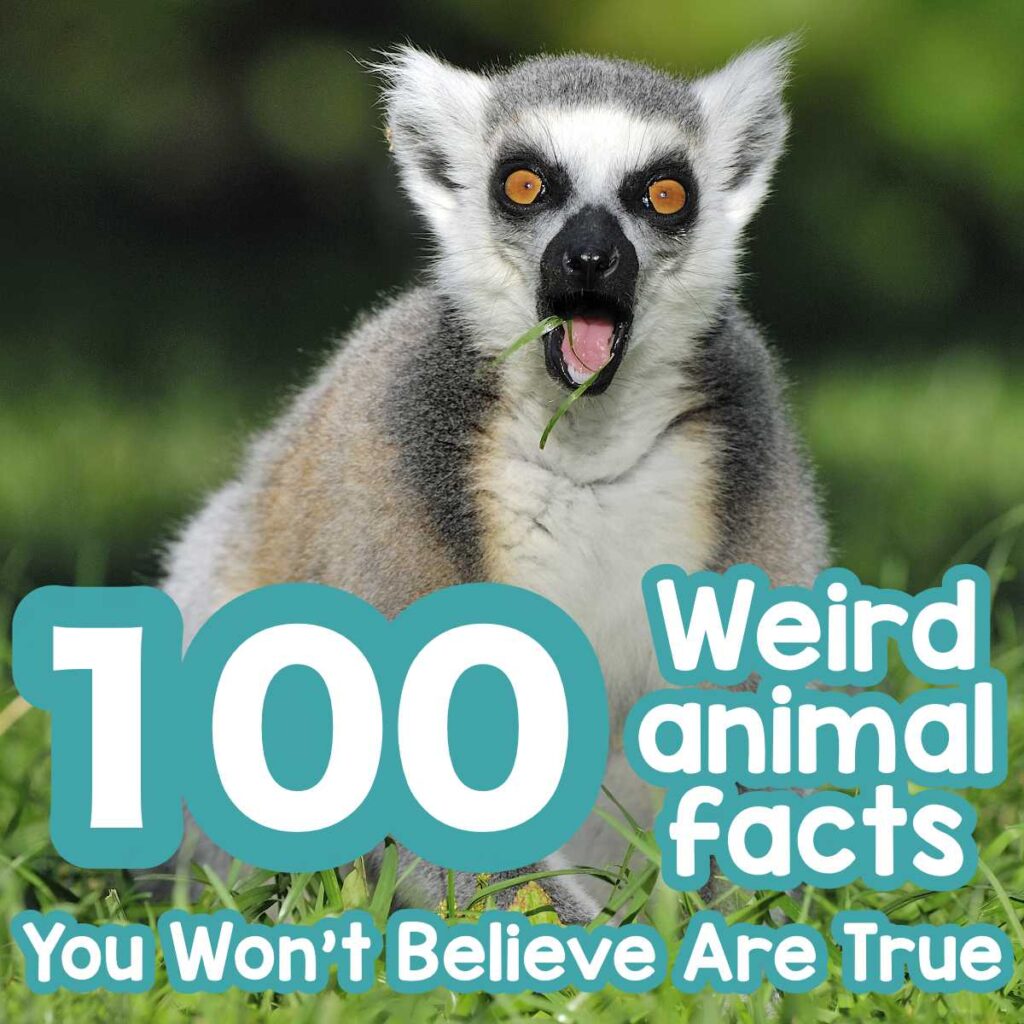
1. Flamingos feed with their heads upside down
We’re kicking off this list of weirdest facts about animals with one of the coolest birds. Flamingos eat with their heads upside down. This has to do with the way their beaks evolved and how they consume their food. They are filter feeders, sucking in mud and water through their bills (which are uniquely positioned upside down).
2. A male giraffe tastes the urine of a female to see if she’s ready to mate
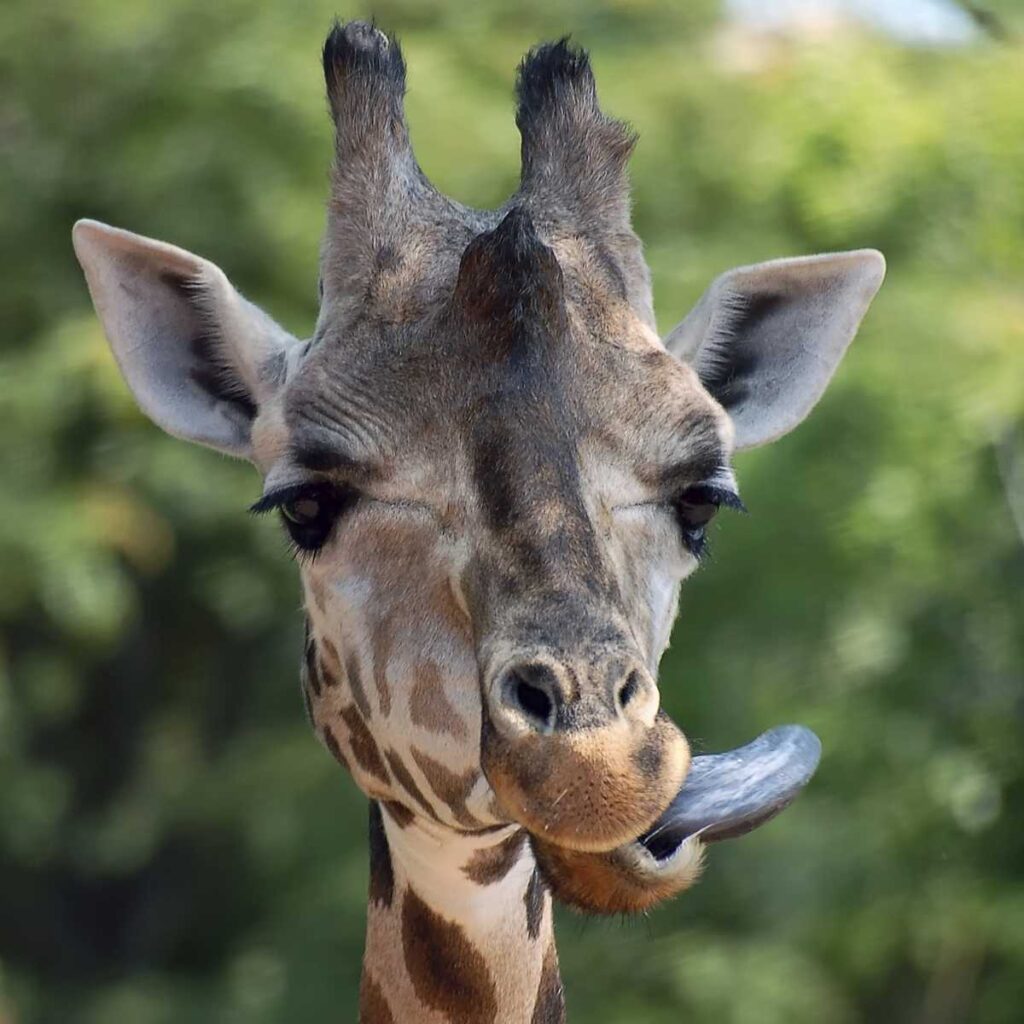
There are many weird animal practices in nature and giraffes certainly do something bizarre when it comes to checking if females are ready to mate (this isn’t completely unique to giraffes though). A male giraffe will bump his nose on the rear of the female, encouraging her to pee. He’ll taste the urine to determine if she is ready to mate.
Want to learn more about giraffes? Read through these giraffe facts.
3. It takes Greenland shark 150 years to reach maturity
Over a century to become of age? Not a problem if you are one of the longest-living vertebrates. Greenland sharks don’t reproduce until they reach about 150 years of age and may live for more than 400 years.
4. Some turtles can breathe through their buts
This type of respiration is called cloacal respiration. This adaptation allows some species of turtles to absorb oxygen from the water through their butts. This type of respiration is used as an accessory aspiration, supplementing blood oxygen and allowing the turtles longer dives. Their primary means of breathing are still their lungs and they have to surface to breathe air.
5. Platypus don’t have nipples, but they do produce milk
Platypus is one of the weirdest animals out there, and for more reasons than just one. These mammals are most famous for being one of the rare to lay eggs, but this isn’t their only bizarre trait. As is with mammals, the young platypuses drink milk. But things get kind of weird here… The female platypus doesn’t have nipples. She produces milk from mammary glands and the milk just “sweats” out of her skin.
6. Lobsters pee out of their heads
Lobsters have urine release nozzles close to their eyes, so they basically pee out of their faces.
7. All desert grassland whiptail lizards are female
This is one of the weirdest facts about animals (but don’t worry things we have some even weirder on this list). These lizards reproduce without fertilization but still manage to maintain genetic diversity as would be seen in male-female reproduction. Their offsprings are unique individuals and not clones of mothers.
8. Argentine tegu lizards are partially warm-blooded
Lizards are generally cold-blooded, meaning they rely on outside sources to regulate their body temperature. Argentine tegu lizards are partially warm-blooded, making an exception to this rule. During their reproductive season, they are able to raise their body temperature up to 18°F / 10°C higher than the ambient temperature at night.
9. Lemurs have two tongues
Why have one if you can have two? Their main tongue is used for eating, and the second one, found under the first one, is used for cleaning some of their teeth.
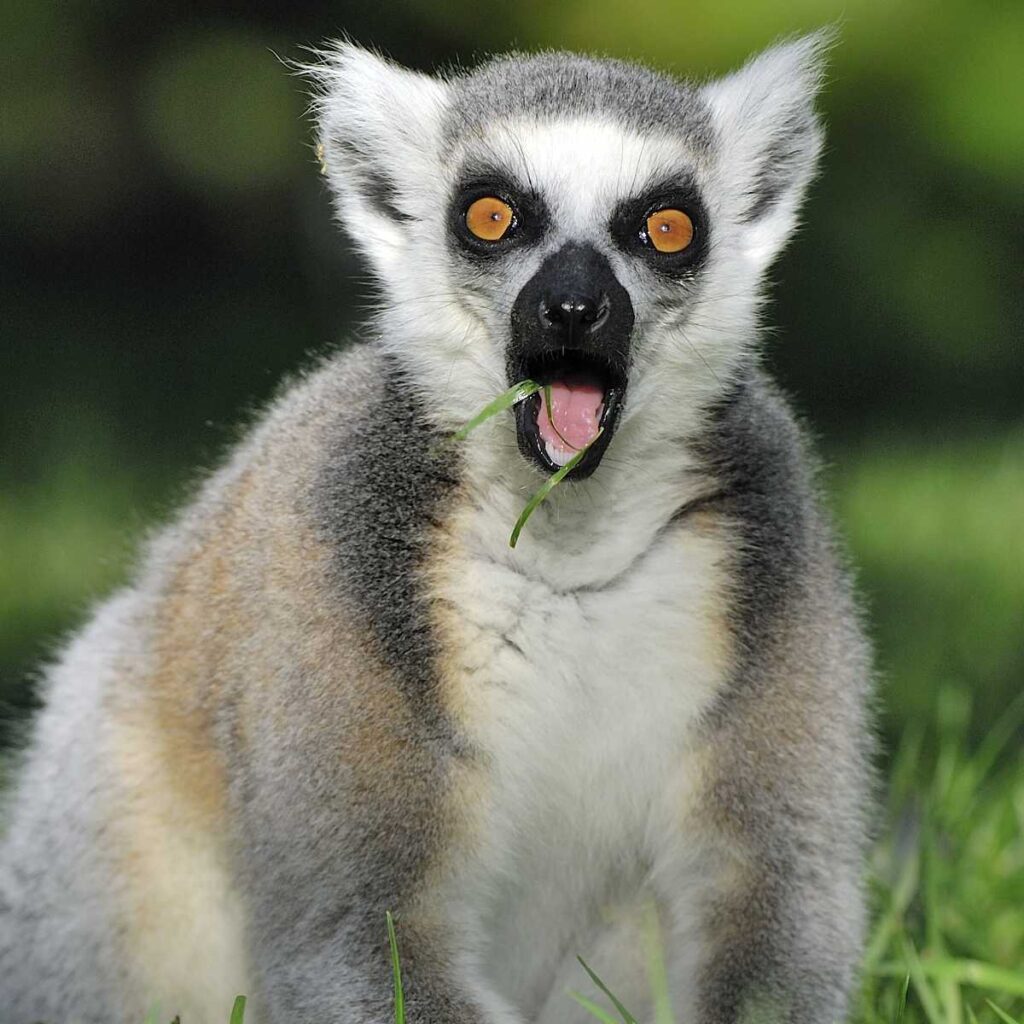
10. Turritopsis dohrnii jellyfish is biologically immortal
In theory, this species is immortal, in real life achieving immortality is close to impossible. Although this jellyfish can’t die of old age, it isn’t immune to predators and some diseases.
What makes this species theoretically immortal is its ability to revert to its polyp phase (it jumps back a stage in its life cycle) if it’s damaged or simply gets too old. It can do this indefinitely.
11. Gray foxes can climb trees
Foxes are canines just like dogs and wolves are. Climbing isn’t exactly something these animals are known for. Even foxes aren’t known for their climbing skills but there is one exception, the Gray fox. This fox is able to climb trees, and does so pretty well, due to the fact it has semi-retractable claws and rotating wrists – similar to cats.
12. Squid have donut-shaped brains
What makes this weird animal fact even weirder is that their esophagus, the tube connecting the mouth and stomach, runs through the “donut” hole. If you were ever told to chew your food, this is an even more important rule when it comes to squid. If they swallow food that is too large, it can lead to brain damage. They need to break it up into smaller pieces with their beaks.
13. Vulture bees feed on rotting meat, their honey isn’t nectar based
Vulture or carrion bees are a species of bees in South America whose diet isn’t your regular pollen but rotting meat. They do produce honey-like substances, from secretions from their glands (the same gland that honey bees use to produce royal jelly). These secretions are likely being derived from their diet, so basically carrion honey.
Is their honey edible? Yes, it is, however unlike honey bees, these bees do not produce excess honey so harvesting it isn’t a good idea as it takes too much from the bees.
14. Hummingbirds can’t walk
They may be the only species of birds capable of flying backward, but they are also one of the species of birds that can’t walk or even hop. As they adapted to become such great flyers they evolved smaller feet, which are lighter. This does make them more efficient flyers but their legs are totally useless on land.
When these birds are perched they are able to move sideways but that is pretty much it when it comes to using their feet on the ground.
15. If a female ferret doesn’t mate she can die
This is an important one to remember, especially if you ever plan to have a pet ferret. When female ferrets are in heat they need to mate. They will remain in heat until they mate. If they don’t mate and remain in heat for too long, too much estrogen will be released into her blood. Too much estrogen will cause a progressive depression of the bone marrow (the bone marrow will stop making red blood cells) and this will lead to aplastic anemia. This is a serious condition that will likely lead to death.
If you own a female ferret and aren’t planning on her reproducing, it is important to have her fix.
16. The sex of a baby alligator is determined by the temperature of the nest
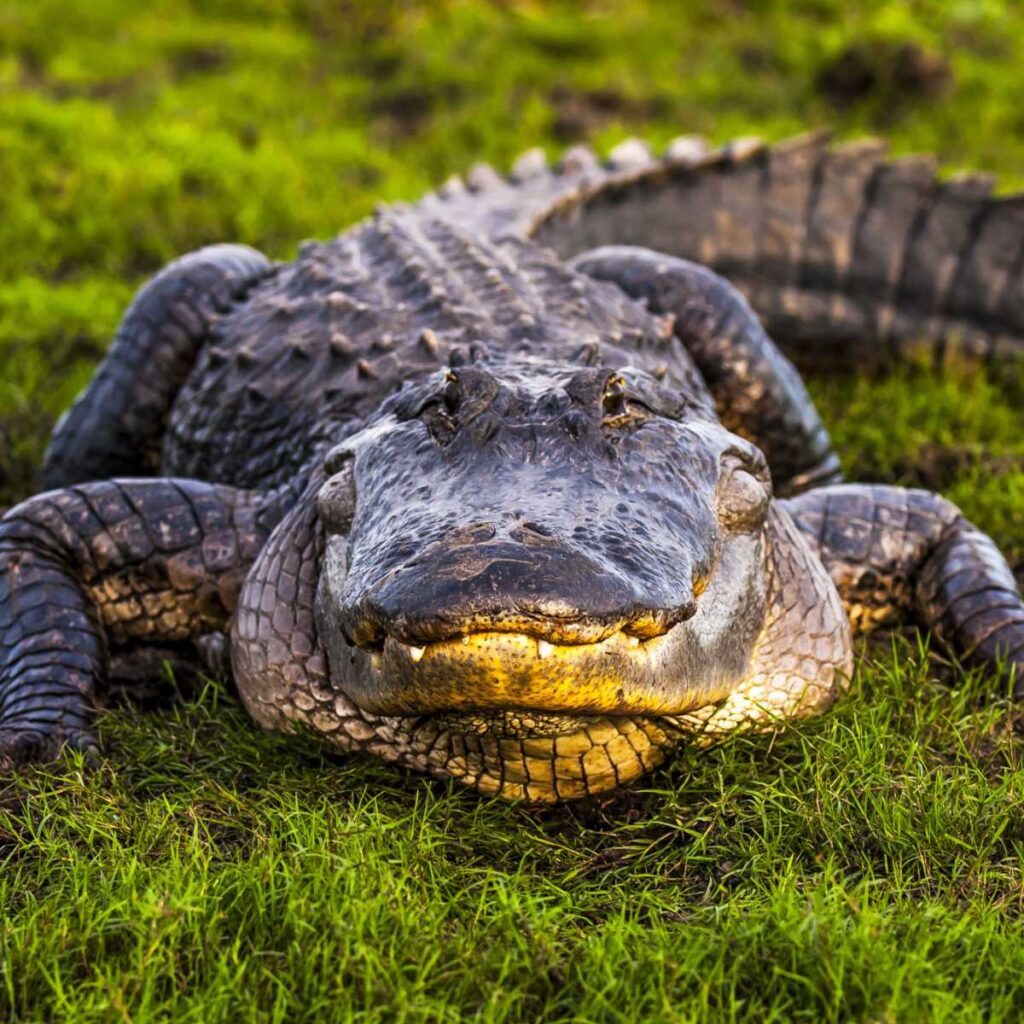
The sex of Alligator miuissippiensis offspring is determined by the temperature of egg incubation. With temperatures at 86°F / 30°C or below the offspring will be females, and 93°F 34°C or above, males. With temperatures in between the litter will have both females and males.
17. If you shave a zebra, there will be no visible stripes, if you shave a tiger the stripes remain
We absolutely do not recommend trying this but it’s still a weird fact to know. None have striped skin though and the stripes of the tiger are seen due to the colored hair follicles, much like a beard stubble.
18. Some snakes lay eggs and some give live births
While most snakes lay eggs, some give live births. While not all, most boas, vipers, sea snakes, and rattlesnakes are some of the species that give live births.
The majority of reptiles lay eggs, and live births have only been observed in snakes and a few lizards. The Australian three-toed skink can do both, it can lay eggs and bear young in a single litter.
19. Poison dart frogs lose their poison in captivity
Poison dart frogs are known for their wonderful bright colors and not-so-wonderful toxicity. It’s best to not touch them in the wild as the poison in their skin can cause swelling, paralysis, nausea. Some species are even potentially lethal to touch.
But in captivity, these frogs gradually lose their poison potency and become non-poisonous. But it’s still best to not touch them, even as pets, as they have very delicate skin.
20. Turkeys can reproduce asexually
Asexual reproduction isn’t uncommon when it comes to simple organisms, but it’s more of an exception than a rule when it comes to higher species.
Turkeys have said ability. In the absence of a male, female turkeys can produce fertile eggs, and these eggs will hatch successfully. The majority of chicks hatched will be male but will also usually be of poor health.
21. Iguanas as well as some other reptiles have a 3rd eye
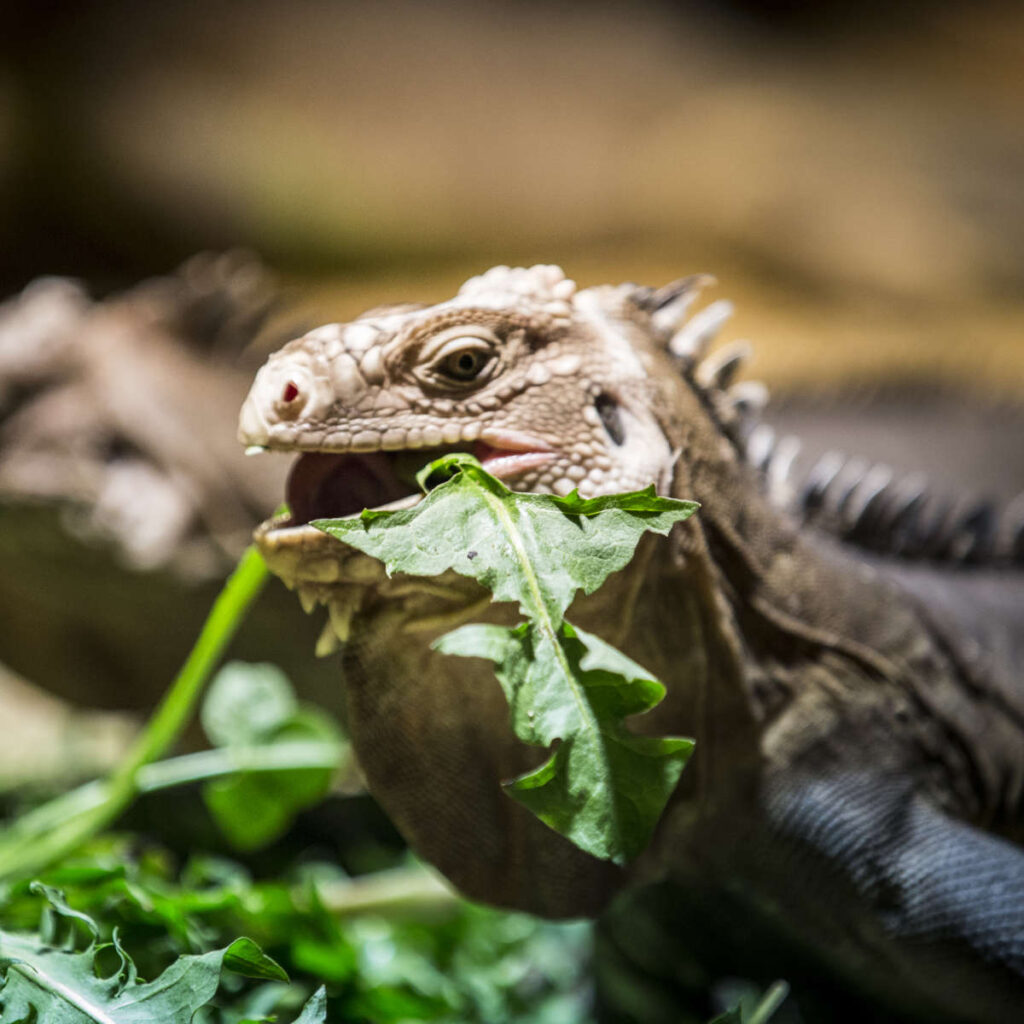
Iguanas as well as some other lizards have a third eye on their head called the parietal eye. This one doesn’t look like the regular eye you are used to seeing, it looks like a regular paler scale. These eyes can’t see shapes or colors but can sense light and movement, helping lizards anticipate and avoid predators.
22. A zebra can kill a lion
Unlike sheep for example who mainly have a flight response, a zebra has a flight and fight response when faced with danger. Zebra will most certainly run, but it can also bite and kick. Their kicks are pretty strong and there have been reports of lions succumbing to injuries caused by zebra’s powerful kicks.
23. Lone star tick’s bite can make you allergic to red meat
They can bring you one step closer to becoming a vegetarian even if you did not choose it. Alpha-gal syndrome is an allergy to red meat and other products made by mammals. The most common cause for this condition is a bite by a Lone Star tick.
When you are bitten a tick transmits the alpha-gall sugar molecule which can cause the allergy (and it can be a life-threatening allergy).
24. Naked mole rats live in colonies and only one female produces offspring (just like seen in ants)
This one is probably on top of the list of weirdest facts about animals. This is a behavior that has only been observed in naked mole rats and Damaraland mole-rats and no other mammal. This is something you would commonly see in ants, termites, and some bee and wasp species.
Only one female (the queen) will reproduce with one to three males and other members of the colony function as workers. Workers are temporarily sterile, if the queen is removed another female will become fertile and take her role as the queen of the colony.
25. Mantis shrimp can detect about 10 times more colors than we can
Humans have 3 color receptors (red, green, and blue), which allow us to see the world as we see it. If we want to detect other aspects of lights (such as UV), we need equipment that is sensitive to that light to convert it into a form we can perceive.
Mantis shrimp on the other hand has 12 different types of color receptors, allowing this animal to detect and see a much more broad spectrum of light than we are capable of. Their visual system is unique and they have the most color receptors as far as known animals go.
26. Calico cats are mostly female and orange cats male
Over 99% of calico cats are females. Most, over 80%, of orange cats are male. The fur color is in the genes and not all color gene codes are present in both chromosomes.
Calico cats need two X chromosomes to have the black, orange, and yellow color combination. Females usually have XX chromosomes and males XY. When a male cat has a XXY chromosome it can have this color pattern.
The orange gene is on the X chromosome, in order for the female to be orange it needs to inherit the gene from both the father and the mother, while males only need the gene from the mother.
27. Koala’s fingerprints are almost indistinguishable from that of a human
Koalas have fingertips much like some primates, and their size makes them indistinguishable from that of a human. So if a koala would be present at a crime scene its fingerprints could interfere with the investigation. Luckily the chances of koalas being present at scenes of crimes are very small.
28. Elephants can “hear” with their feet
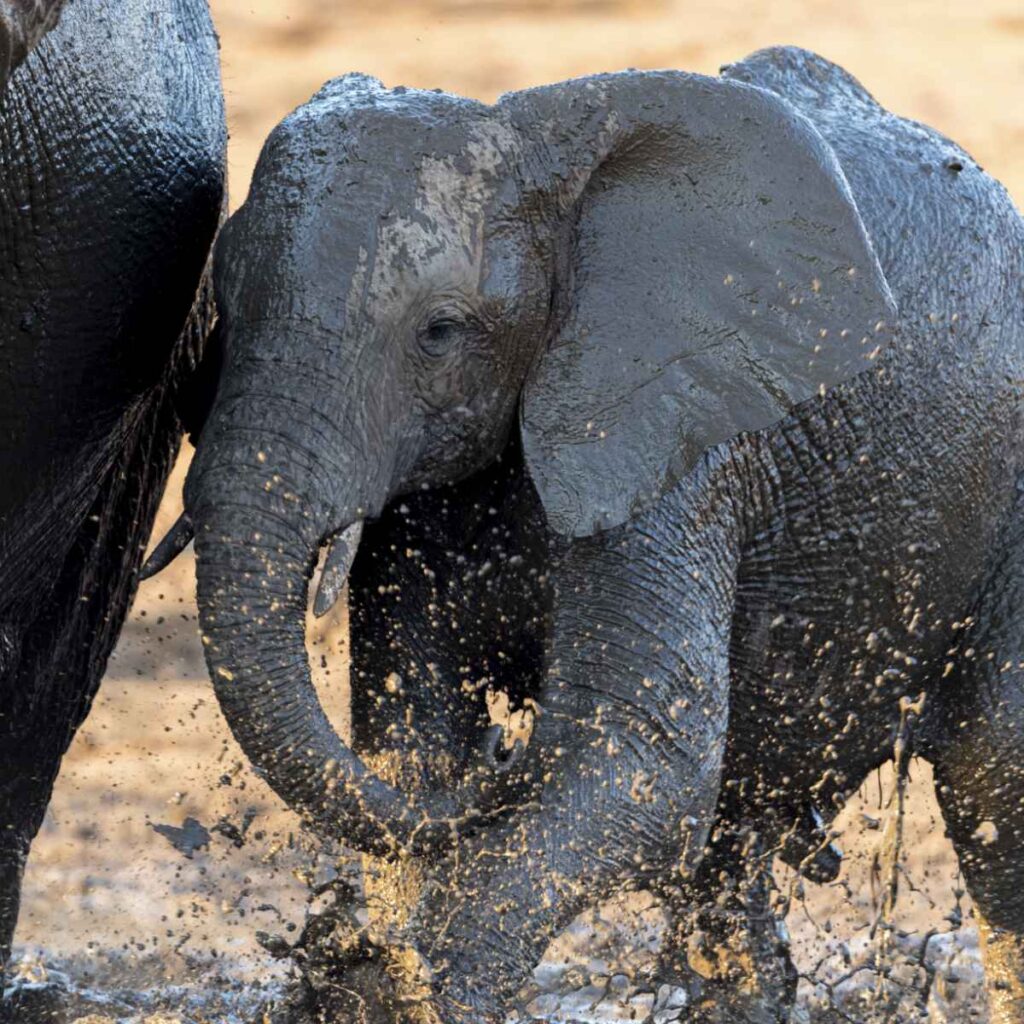
Elephants are able to pick up ground vibrations through their feet and they are able to make sense of them. They pick up sound waves that travel within the surface of the ground, allowing them to “hear” how other elephant herds are acting for example. This is called seismic communication.
Also read: fun facts about elephants
29. The skin of a polar bear is black
Polar bears are pretty interesting when it comes to color. Their coat doesn’t have white pigments and is actually transparent and their skin is black. The hair appears white because of light scattering.
Their black skin is an adaptation to the harsh environment they live in as it allows them to better absorb the UV light and stay warm.
30. Sea-sponges have no organs
When it comes to the weirdest facts about animals, having no organs is a must to make the list. It’s not exactly uncommon for an animal to lack an organ or two that is commonly seen in most species but to have none? Here come the sea sponges!
They are considered animals but act more like plants. They have no nervous system, no organs, no blood vessels, or similar circulatory system or digestive system.
You might also want to check what are some other animals without brains.
31. Flamingos aren’t naturally pink
Flamingos are born white gray and it takes a few years for them to get their signature color. The color comes from carotenoids, the same substance that gives carrots their orange color, which can be found in some microscopic algae. These algae are a food source for brine shrimp, and both the algae and the brine shrimp are eaten by the flamingo.
Flamingos metabolize the pigment and it gets deposited in their feathers.
32. Bats have nipples under their armpits

If you look at the chest of a bat you won’t notice the nipples, however, when they raise their armpits one nipple on each side will show.
33. Barnacles are the best-endowed animals
When it comes to the body to penis ratio barnacles take the crown. These animals are mollusk-looking relatives of lobsters, crabs, and shrimp and they have a 1 to 8 ratio, in favor of their male reproductive organ.
34. Whales aren’t the longest animals, bootlace worms are longer
The Antarctic blue whale is the largest animal in the world as well as the largest known animal to ever exist. It’s larger than any known dinosaur or sea reptile. But it’s not the longest. In fact, there are more than one species of animal that can reach lengths greater than that of a blue whale.
Both the Lion’s Mane jellyfish and the Bootlace worm can be longer than the whale, with specimens of the bootlace worm being the longest.
35. Sloths can starve to death on a full stomach
Sloths are one of the slowest moving animals on the planet. Even their digestive system is really slow, which is why sloths only defecate once per week. But it isn’t their slow digestion that can cause a sloth to die of starvation even if their stomachs are full and they eat regularly.
In order to digest food, sloths rely on various gut and stomach bacteria. These bacteria need warm temperatures to thrive and if the environmental temperatures drop and stay too low, these bacteria won’t survive. Without them, sloths are unable to get nutrients from the food they ingest and will starve to death.
36. A sea cucumber will eject some of its organs to escape a predator
Some sea cucumbers will eject parts of their guts or part of the respiratory system to escape their predators. Depending on species they will either throw out their organs through their mouth or through their but.
37. Portuguese Man o’ war isn’t a jellyfish, it’s a colonial organism
It may look like a jellyfish but is in fact a colonial organism related to jellyfish. Each man o’ war is composed of smaller units called zooids. Zooids are individual animals that are parts of colonial organisms – these animals can be connected with other zooids by tissue or they can share a common exoskeleton. As many as 7 different types of zooids can be found in a single Man o’ war. These zooids each have their own functions and together they function as a single organism would.
38. Under normal circumstances, koalas don’t drink water
Koalas get all the fluids they need from their eucalyptus diet. They have been observed to lick water running down the tree trunks, but generally don’t have the need to drink water.
If the environmental conditions are incredibly dry, the koala might not get enough fluids from its diet and will drink water.
39. Carpenter ants can get infected by a fungus that turns them into zombies
A carpenter ant can have the most unfortunate faith. It can get infected with a special type of fungus (zombie-ant fungus). The fungus will take over the mind and body of the ant, changing its behavior completely. The infected canopy ant will leave for the ground, climb on the vegetation and attach itself to the underside of the leaves where it will die.
The horrors don’t end there. Once attached to the leaf, at some point the fungi’s pinkish-white stalk will start growing from the dead ant’s head.
Becoming a zombie should be one of the weirdest facts about animals, shouldn’t it?
40. Jacob Sheep can have 6 horns
When you think about these fluffy wooly animals your mind usually draws an image of a female sheep without horns and a male sheep with a pair of curved horns. But this is not the case for all breeds of sheep.
Jacob sheep commonly have 2 or 4 horns but can often have 6 as well. Horns are present in both male and female sheep.
41. A Galápagos tortoise can go without eating or drinking for up to a year
Their habitat forced them to adapt to circumstances when food isn’t abundant so these turtles can go up to a year without food or drinking water. These tortoises have the ability to store food and water in its body very effectively.
This might seem like a cool ability but it was what led to the species’ downfall. Before this practice was banned, these tortoises were a convenient food for sailors. They would store them on boats and these animals would be fresh for a long time without much effort on the sailor’s part.
42. Dragonflies can’t walk
Dragonflies have 6 legs and but they don’t use them for walking. They use them for landing, holding their prey, and cleaning themselves. They might move with them a little but aren’t generally capable of walking.
43. Octopuses can squeeze through everything as long as their mouths fit through
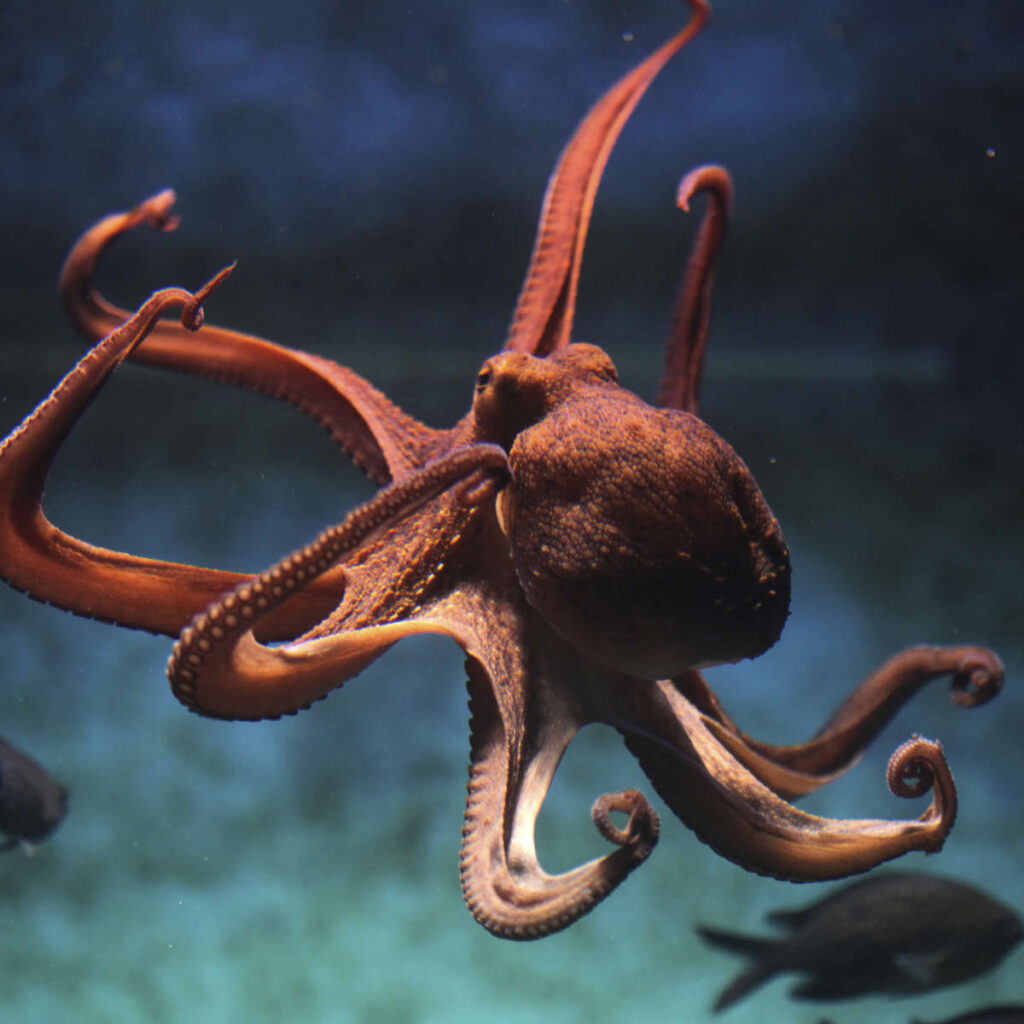
Octopuses don’t have any bones in their bodies, the only hard part of their body is their beak. If they can fit their beaks through an opening, they can fit their whole body.
Learn more amazing facts about octopuses.
44. The tongue of a blue whale weighs more than a hippo
It can be hard to imagine just how big the blue whales can get. Their tongues alone weight 5400 lbs / 2450 kg which is quite a bit more than the weight of an average adult female hippo (3000 pounds / 1350 kg) and most male hippos. The tongue weighs more than some adult elephants weigh. Absolutely massive!
45. A female Tasmanian devil gives birth to 20-30 pups but only has 4 nipples
What’s even weirder is that the pups will be constantly attached to one of the nipples which means only 4 of the pups from the litter will get the chance to feed. Other baby Tasmanian devils do not make it and even out of the 4 that do not all will reach adulthood.
When they are born, the race to the nipple commences, and the first ones to reach the nipples have a chance of survival. Once they latch on, the nipple will expand and hold the baby Tasmanian devil in place.
46. Ducks have corkscrew penises, that fall off at the end of each mating
This is probably one of the weirdest facts about animals, and we aren’t sure if we can recommend searching for images of this. The male and female ducks have adapted quite a bit when it comes to reproduction, the females to avoid it and the males to achieve it and the results are freaky, to put it mildly.
47. Armadillos usually give birth to identical quadruplets
Nine-banded armadillos will almost always have identical quadruplets. This will happen because a single egg is fertilized and the egg then splits in half and these halves split again before they get implanted in the uterine wall.
48. Snapping shrimps are one of the loudest animals in the ocean
It comes as no surprise that the likes of blue whales, wolves, elephants, and lions are some of the loudest animals on the planet. However, something as small as a snapping shrimp also makes the list of the loudest animals on the planet.
These shrimps can produce a pop that is louder than a gunshot. Add to that that these shrimps can live in colonies with over 300 members things can get really loud.
49. Male Dayak fruit bats produce milk
Males producing milk isn’t something that is naturally occurring in mammals unless you are a Dayak fruit bat. Males of the species also produce milk, although in quantities that are far less than that of a female. The male bat hasn’t been observed to nurse the young, but it is possible it could.
50. Kangaroos can drown other animals
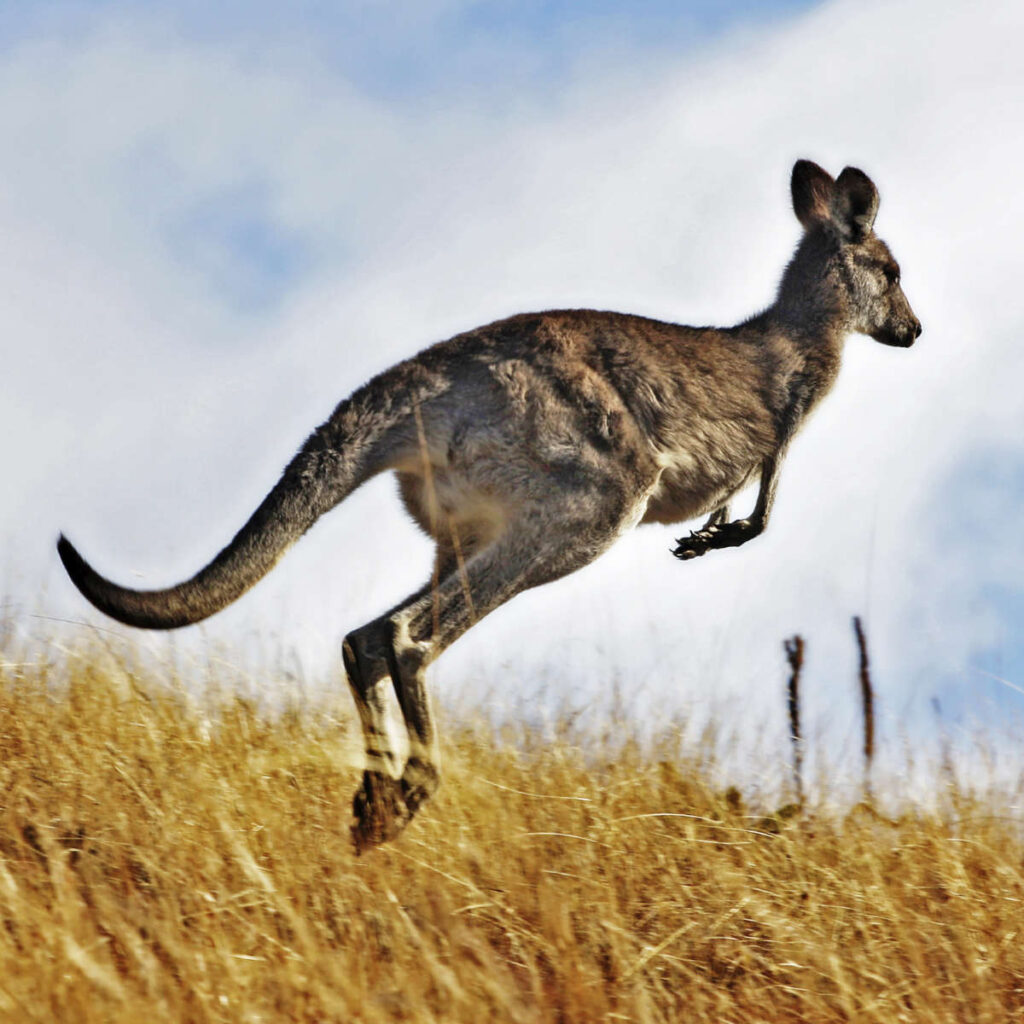
And we are halfway through our list of weirdest facts about animals! Kangaroos are pretty good swimmers and if need be, they will try to escape their predators by going into the water. If the predator follows the kangaroo, a kangaroo might turn around when the water is deep enough and attempt to drown the predator with its front legs (arms).
51. Hairy frogs intentionally break their bones to make their “claws”
Another one that could be crowned as one of the weirdest facts about animals. Hairy frogs get their names after the hair-like structures on their body but this isn’t the only odd thing about this species. This frog has retractable claws which it can project through its skin (a frog Wolverine if you will) – to make these “claws” the frog is believed to intentionally break the bones of its toes. As these claws are made of bone, they aren’t true claws as claws are made of keratin.
52. In times of floods, fire ants gather and form rafts
If you are an ant and live in an area that often floods this could mean trouble. But not necessarily if you are a fire ant. When their nests are flooded these ants will leave them and will join together and form floating rafts. Thousands of ants sticking together. These rafts float and prevent the fire ants from drowning. What’s more, they can maintain these rafts for weeks.
53. Snakes can’t close their eyes
Blinking and sleeping with our eyes closed is something we take for granted, but not all animals have said ability. Snakes for example don’t have eyelids so they can not blink or close their eyes. They can close their retinas though, so this is how they sleep.
54. A rainbow slug has over 700.000 teeth
When you are thinking about animals with the most teeth, the likes of sharks come to mind as they can easily sport up to 300 teeth. But this number fades in comparison to the sea-dwelling rainbow slug which has over 700.000 teeth. These snails are very likely the toothiest animals on the planet.
55. Pacu fish have human-like teeth
And while we are at teeth, the pacu fish has one of the weirdest looking teeth as far as fish go, its teeth freakishly resemble those of a human. Thankfully the horrors end there as the teeth are primarily used to crush food like fruits and nuts and occasionally smaller fish. Humans have nothing to fear from these piranha-related fish.
56. Rabbits eat their own poop
No nutrients shall go to waste! Rabbits produce two types of droppings, the dry crumbly ones, and softer sticky ones. The soft ones they eat and digest again. These poops are called cecotropes, and they still contain a lot of nutrients as digesting fibrous material isn’t easy. Rabbits eat cecotropes to digest them again and extract as much of the nutrients as possible.
57. Humans are the only species that have a fully developed uvula
That teardrop-shaped thingy at the back of our mouths is called a uvula and it is only seen in humans. Some people even have a uvula that is split in two. No other species has it to the extent we do. It was only observed in a few Baboons, and even they only have a small undeveloped uvula.
58. Some sea otters have a favorite rock they store in their pouch
Otters are very interesting animals. They hold hands when sleeping and they might steal baby seals (not in an adorable way, sadly). They also use tools (rocks) to split open shells. As good rocks may be hard to find some otters keep their best rock with them at all times. They carry it around in the baggy pockets of loose skin they have under their arms.
59. When a female sloth is ready to mate it will scream until a male finds her
Sloths really aren’t keen on moving around. When a female is in heat, she will start screaming (mating scream) to attract the males. The male will search for the female when he hears these screams.
60. Narwhals have no teeth in their mouths
Narwhals only have 2 teeth and none of the two are inside their mouth. Usually, one of the two teeth, that are found in the snout, is the horn (the horn is a modified tooth). Sometimes narwhals will have two horns and sometimes none.
61. Leeches are hermaphrodites
These little (mostly) bloodsuckers are hermaphrodites. Each leech has both male and female reproductive organs and when they mate both leeches become pregnant.
Leaches are fascinating! Read through these leech facts to learn more about them.
62. Sea horses are one of the only species where males give birth
Sea horses and their close relatives the sea dragons are unique when it comes to reproduction. In these animals, it’s the male that gives birth to the young. They do not produce the eggs though. When seahorses and sea dragons mate, the female will deposit her eggs into the special pouch on the male. The male will fertilize the eggs inside his pouch and carry them to term.
63. Kangaroos can’t walk backward
Most animals are able to walk backward and only a few species can’t, one of them, being the kangaroos.
64. Some short-horned lizards shoot blood from their eyes
Different animals evolved different mechanisms to deter their predators, some weirder than others. Short-horned lizards take the prize here as they may shoot blood from their eyes as their final defense response.
65. Ostrich are the only animals with 4 kneecaps
These largest living birds have a few things that are unique to them, one being the number of their kneecaps. As of now, they are the only species with 4 kneecaps, and not the usual two were observed.
66. If a woodchuck breaks an incisor tooth the opposite incisor will grow into their brains
Their 4 incisor teeth are constantly growing and have to be constantly filed down. When they gnaw on things, the teeth grind on each other and they get filled down. If they break one of these incisor teeth, the opposing tooth won’t get filled down and will keep on growing until it either pierces through the skull of the woodchuck or grows in a manner that prevents the animal from eating, both scenarios leading to the death of a woodchuck.
67. Axolotls can regrow almost any part of their body
These aquatic salamanders have amazing regenerative abilities, they can regrow their limbs and even some organs. They can regrow their heart, lungs, and even the front portion of their brains.
68. The meerkat is the world’s most homicidal mammal
There is research that studies the homicidal rates of animals and the friendly-looking meerkats top the list of most homicidal mammals. It is estimated almost 1 in 5 markets will die at the hands of another meerkat. Very, very murdery.
69. Scales of sharks are made of dentin, just like our teeth
The entire body of a shark is actually covered in sharp little scale-like denticles. These denticles are made out of layers of dentine, the same substance our teeth are made of, and of surface enamel.
70. Birds have more neck bones than giraffes do
Giraffe has only 7 neck bones, the same as humans do (as well as most mammals). Most birds have anywhere between 13 to 25 bones, which is way more than giraffes do. The necks of giraffes are as long as they are as their neck bones are very elongated.
71. Octopus have blue blood
These almost otherworldly creatures have blue-hued blood. Wonder why? It’s because their blood is copper-based, it’s the copper that gives it this distinct color. The proteins in their blood cells are called hemocyanin. Humans and other red-blooded creatures have iron-based blood, the protein being hemoglobin.
72. Most primates have a baculum (penis bone)
When it comes to primates, humans are one of the rare ones without it. It’s also seen in some other species of mammals such as bats, rodents, carnivores, and insectivores.
73. When swimming, the platypus has their eyes and ears shut
These animals spend a lot of their time in water foraging for food. When in water it will close its eyes and ears and rely on the electro receptors on its bill (snout) to sense other animals.
74. One of the ways manatees maintain their buoyancy is by flatulence
Now if this isn’t one of the weirdest facts about animals we don’t know what is. They regulate their buoyancy with farts. These aquatic mammals don’t have swim bladders, an organ that helps many fish control their buoyancy, so they have adapted in different ways to control it. Their heavy bones, specialized lungs, diaphragms, the amount of food they eat, and flatulence all contribute to their buoyancy control.
Don’t worry, this isn’t the only fact on this list of weirdest animal facts that have to do with farts.
75. On average a tongue of a chameleon is twice the length of its body
Relative to its body length, the chameleon has the longest tongue of all animals.
76. Tardigrades can survive in outer space (for a while)
Tardigrades are one of the weirdest animals on our planet, with one of their super abilities being able to survive in outer space for 10 days or even more. Yup, these creatures were flown into space, and an experiment was conducted, with a colony being exposed to outer space. After 10 days most of the colony was still alive.
77. Adult cats do not meow at other cats, they only meow at us
That’s right cats meow only to communicate with us. Just another reason to love these animals.
78. Baby koalas can’t digest eucalyptus, they need gut bacteria first, which they get from their mother’s poop
Koala’s diet consists almost solely of eucalyptus leaves but when koalas are born they don’t have the gut bacteria necessary to digest it. They get their bacteria from watery stools from their mothers.
79. If a cow has twin calves and one is male and one female, the female will be infertile most of the time
The fertility of the male is reduced as well, but not to the extent seen in females. These infertile females are known as freemartins. They have masculinized behavior and non-functioning ovaries. This happens because most cattle twins have interconnected blood vessels (when in the uterus) and male hormones from the male pass to the female. The sooner the blood vessels interconnect, the greater the effect on the female. In about 10% of twin pregnancies, the blood vessels don’t interconnect and the female will be born fertile.
This has been observed in all cattle species and does not normally occur with other mammal species (although it was observed in some). Certainly one of the weirdest facts about animals.
80. A new starfish can grow from a severed limb of a starfish

If you are a starfish and have your arm chopped off you don’t really have to worry, a new one will grow in its place. Oh but there’s more. The chopped-off arm can regrow a whole starfish if the arm retains a small piece of the starfish’s central region.
81. Most Kangaroos can pause their pregnancies
What’s even weirder is the adult female kangaroo is practically pregnant all of the time. They become pregnant again soon after they give birth to little joeys. The development of the embryo in the womb can be put on pause and resumed at a later time.
Wallabies, relatives of kangaroos have the same ability.
82. Only about 3% of bird species have a penis
The species of birds that don’t have a penis reproduce by what is called a cloacal kiss. The male and female birds press their cloacal openings together and the sperm transfers to the female. Chickens fall under the 97% of penis-less bird species, in case you were wondering how this type of reproduction looks.
83. Sloths don’t fart
Yup, their metabolism is too slow and their gut microbes are too simple for flatulence.
84. A few shark species will suffocate if they stop swimming
Most sharks will be OK if they stop swimming, however, shark species like the great white, whale shark and maki shark for example need to move in order to get oxygen into their body. These sharks don’t have muscles that would allow them to pump water into their mouths and through their gills. In order for them to push the water into their mouths and through their gills they need to constantly swim with their mouths partially open.
85. Male angler fish fuse with the female to mate, becoming a part of her
The deep sea male anglerfish, fuse bodies with females when they mate. Males are smaller than females and they become permanently attached to the females. They become little bumps on the female’s bodies.
Quite a few facts on this list of weirdest facts about animals are about reproduction, but this one just might be the weirdest.
86. Hippopotamus don’t really swim
Hippos spend most of their lives in water but they don’t really swim. They do have webbed toes, which would help them with swimming, however, their legs are just too short and their body is not really swim-friendly. They mostly move in water by walking and galloping.
87. Some ants enslave other species of ants
Slave-making ants capture the offspring of other ant species to increase the workforce of their colonies. The enslaved ants will work as they would in their own nests while the enslaving ants concentrate on procuring more slaves for their colony.
88. Female dragonflies can play dead to avoid mating
When she is not in the mood she shows it. If a moorland hawker female dragonfly isn’t ready to mate she can go as far as playing dead to avoid pushy males. They will freeze mid-air and drop to the ground to fool their suitors. Now this is one of the weirdest facts about animals, isn’t it?
89. The eye of an ostrich is bigger than its brain
Not something to be proud of. But it’s not all bad as their eyes are extremely big. In fact, they have the biggest eyes of all land vertebrates, their eyes are even bigger than that of an elephant.
90. Quokkas can sacrifice their young to escape a predator
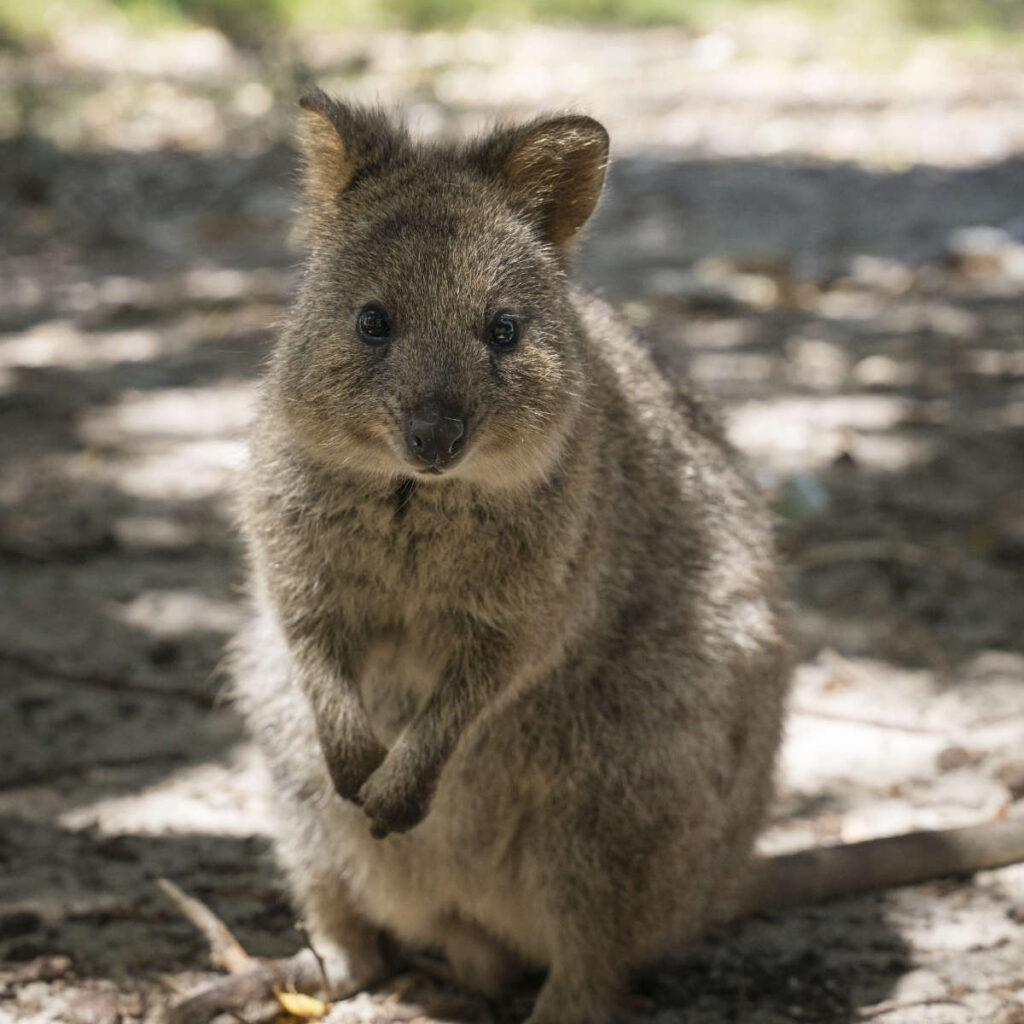
Quokkas may be all cute and cuddly looking but when it gets to parenting they won’t get any awards. They are marsupials, just like kangaroos are, and one of the traits of some animals belonging to this group is that if they are threatened by a predator, they may sacrifice their young to save themselves.
Thanks to a popular meme, when it comes to this behavior quokkas are in the spotlight.
91. Fish hunting Cone snails hunt their prey with venomous harpoons
We’re almost at the end of our list of weirdest facts about animals, and this one has to do with the cool hunting skills of cone snails. They fire a harpoon-shaped tooth from their proboscis (tube-like appendage) at their prey and the venom this tooth harpoon contains paralyzes the fish. The venom acts fast and the fish will be immobilized within seconds.
92. All clownfish are born male and they can change their sex (once)
All clownfish start their lives as males. They live in small groups, consisting of a dominant female and a dominant male fish and their offspring. When a female fish dies, the male will change its gender, a change that is irreversible, and becomes the dominant female. Usually one of the offspring will then become a dominant male. There is a large degree of inbreeding when it comes to clownfish, but thankfully for them, inbreeding in fish isn’t as harmful as it is with mammals.
93. Wombat poop is cube-shaped
When it comes to stool, round or sausage are the norms but not when it comes to wombats. Their stools are cube-shaped.
94. Japanese macaques make snowballs
These monkeys are also called snow monkeys and the name fits. You might have seen videos of these animals as they take relaxing dips in hot springs but there is another thing that makes these animals pretty cool. Some make snowballs and they let thee snowballs roll down hills just for the fun of it.
95. Most birds don’t produce urine
Birds don’t pee. Unlike mammals, most birds don’t produce urine, don’t have a urethra, and hence don’t pee. All the waste they produce comes from their buts.
96. Caterpillars liquify before becoming butterflies
You may think the transformation from the caterpillar to the butterfly is a gentle one, but things get super weird inside a cocoon. The caterpillar will basically digest itself. It releases enzymes that dissolve all of its tissue, transforming itself mostly into liquid goo (they do leave breathing tubes intact as well as some other key structures). Like a soup with chunks. And from this soup and chunks, a butterfly is made. One of the weirdest facts about animals for sure.
97. Opossums have an odd number of nipples.
Opossums mostly have 13 nipples. The quantity isn’t something out of the norm as many animals have more than a dozen nipples, however, the odd number of them is. Their nipples are arranged in a circle with one of them being in the middle.
98. The largest moth, the Atlas moth, never eats
Once an adult moth emerges from the cocoon it won’t eat. Both male and female Atlas moths emerge from the cocoon without their mouths fully forming, making it impossible for them to eat or drink. These moths live for only about 1 to 3 weeks, living off food reserves from their caterpillar stage. They will conserve energy when possible and try to mate before they die. The females will stay in one place and the males will fly around in search of females.
An animal not eating at all certainly is a contender to top the list of weirdest facts about animals.
99. Without a head, a cockroach will live for days and die due to dehydration
You know cockroaches are resilient creatures but did you know they can live without their heads. The reason they die isn’t the lack of heads but because they don’t have a mouth to drink water with, they dehydrate in the end. They can survive as their respiratory system doesn’t depend on their mouths, they bread through segments of their body. Without a brain, their nervous system still functions, allowing the headless bug a pretty normal functioning life.
100. Regardless of size, most mammals urinate for about the same amount of time
Last on our list of weirdest facts about animals is the 21-second rule. Researchers discovered that all mammals that are larger than 6 pounds / 3kg will take about 21 seconds to empty their full bladder, regardless of their size. If you are interested, you can read more about this study here.
